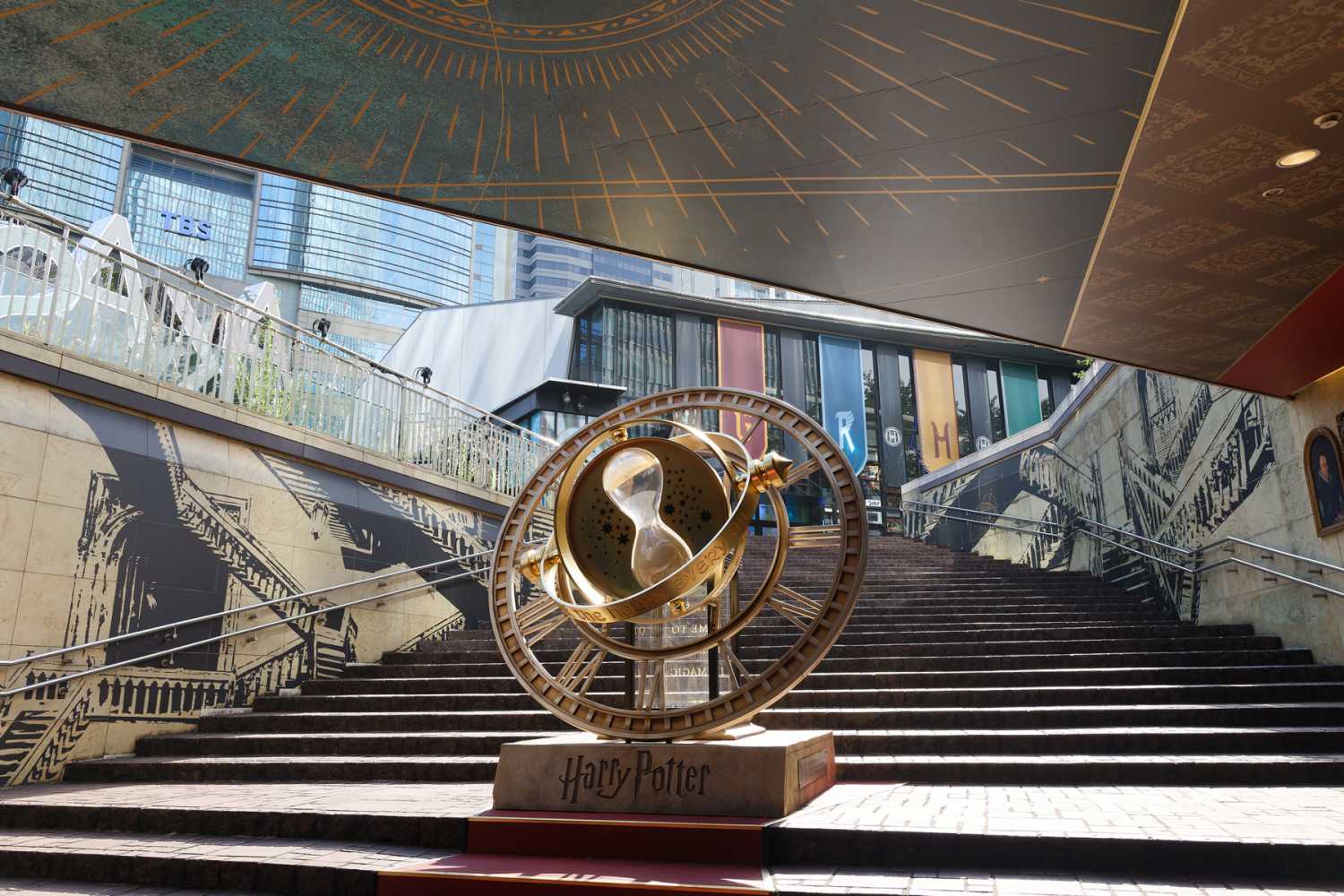Rivage delivers for Harry Potter in Tokyo
- Details

For the latest production at Tokyo’s TBS Akasaka ACT theatre, the show’s Olivier and Tony award-winning sound designer Gareth Fry has trusted a Yamaha Rivage PM5 digital mixing system to handle a show which previously needed two mixing surfaces.
The Tokyo production features more than 150 inputs, approximately 50 microphone inputs and 80 channels of playback, with around 500 cues. The audio is routed via a Dante network, fully digital from the wireless transmitters until it leaves the amplifiers. Key to the new production is the Rivage PM series’ advanced theatre software, which offers a number of advantages to theatre sound designers.
“The Rivage PM5 combines the features we liked about both consoles we were previously using on Cursed Child, one of which was a Yamaha CL5,” says Gareth. “Running it in dual monitor mode means the SFX operator can use the left fader bank of the control surface and the microphone mixer can use the rest. It makes for a much simpler overall signal flow and has meant we are also able to reduce our seat kill considerably.”
“This production requires far more inputs than previous theatre productions at the TBS Akasaka ACT theatre, so the large mixing capacity of the RIVAGE PM5 is very important,” adds Satoshi Tateishi of Office Shin-On Ltd, who is the production’s local associate sound designer.
“The sound quality is extremely clear. Turning up the DCA for the playback sound means about 60 channels come up, and there are always at least 10 microphone inputs live at once. Even with so many faders up, the signal to noise ratio is never a problem.”
Another significant advantage has been the performer library, which allows for instant changing of microphone and mix settings for each character.
“Post-Covid, we’ve noticed that cast members are being more mindful of their health and their potential effect on other cast members. This is a really positive change and it’s essential for their long-term wellbeing which also benefits the production, particularly on a long running show,” says Gareth.
“There are between three and five performers who can cover each of the principal roles, so it’s essential to be able to easily alter the microphone programming to accommodate who is playing which role on a show-by-show basis. The theatre software makes that possible and also enables us to deal quickly with other common problems, like the EQ of the mic changing when a hat is taken on and off.”
This is echoed by Mr Tateishi, who adds. “The actors can change for every performance. Being able to instantly switch the settings on each character’s channel is vital. Without that function, I don't think this production would have been possible.”
He continues, “The A/B switching is another indispensable feature. The principal cast members all have two wireless transmitter frequencies. If one has problems, the A/B instantly switches to the other. On this production, some cast members dive into water while wearing microphones, so issues occur quite often.”
For the Japanese production team, one of the key differences has been working with the Dante network. Another has been the production running for longer than is usual in Japanese theatre, Cursed Child being set to continue to at least the end of 2023, and almost certainly well into 2024.
“We asked the sound designers for an audio flow and connection schematic, but they didn't have the kind of diagrams we are used to. What we got was something more like a network diagram,” says Hideo Sato, executive officer of S.C. Alliance Inc, who was in charge of building the system. “But because it will run a lot longer than is usual in Japan, it is more of a semi-permanent installation, so we had several months of fit-up before the show opened, giving us a lot of time to work on the system.”
Another of the many challenges for Gareth and his team was developing the production in different locations across the world. With several audio teams involved, another advantage of a Yamaha solution was the consistency of user interface. With the Rivage PM5 in Tokyo and a Rivage PM7 on the Toronto production, it was important that both the design and sound teams were up to speed on the operating system as quickly as possible.
“While Tokyo was rehearsing and teching, we were simultaneously re-opening the show as a new one-part version in Melbourne and opening a new production in Toronto. We have local teams running the sound in each country and, as a relatively small design department, we were stretching ourselves across three continents at once,” says Gareth.
“But thanks to that familiarity of user interface and the preparation of everyone involved, assembling the system for the Tokyo production was relatively smooth. The Japanese sound team and hire companies have been great to work with.”
















